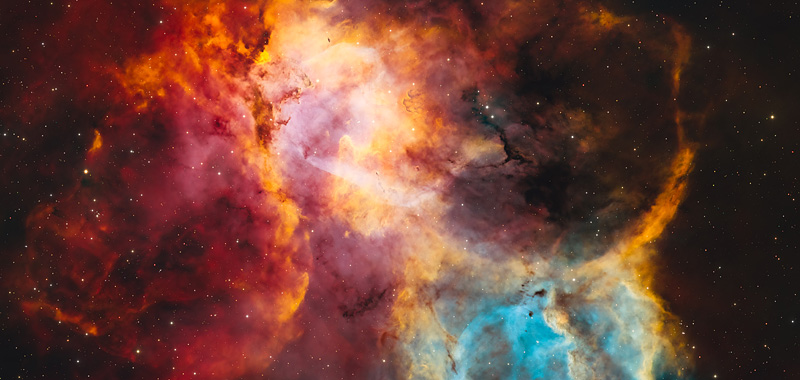Astrophotography with the Sigma fp L – Having worked for a year with the SIGMA fp (see article (1) and article (2) here). It was always clear that the SIGMA fp L might be an extremely interesting alternative. As such I arranged for a SIGMA fp L to be de-bayered (via monochromeimaging – a considerably more challenging task than with the fp!) The SIGMA fp L I have reviewed before (see here), and it offers considerably flexibility with respect to the fp for terrestrial photography. From an astrophotography perspective, there are compromises that have to be made for the extra resolution, that a 62MP monochrome camera brings. The smaller pixels 3.78 µm vs 5.98 µm in the fp, means that the sensor is more prone to noise than the fp, albeit in a camera that, due to the presence of the heatsink, controls noise very well. As a result, the “sweet spot” for the ISO for the SIGMA fp L is ISO 400 whereas it is ISO 1250 for the fp. Having both cameras available means that for strong signals (very often the Ha signal in a nebula) I can call on the resolution of the SIGMA fp L, whereas for fainter signals and/or if time is short, I can fall back on the better signal to noise ratio of the fp.
As of June 2023, an ASCOM driver is now available for the SIGMA fp L. ASCOM drivers are the communication protocols for much astrophotography equipment, and this means that many aspects of our workflow with a SIGMA fp L can now be automated. Whilst the live view via the camera HDMI output in combination with SharpCap remains the ideal method to build the tracking model that the 10 Micron GM1000 HPS needs, connecting the camera to the computer via the USB-C port allows camera to be connected with a program such as N.I.N.A. and the focusing of the telescope can be automated. With a telescope (Celestron RASA 11” V2), where the focus is highly sensitive to temperature changes during the course of the night, this is a significant step forward.

Out in the field, and this year (2023) for health reasons from home, the SIGMA fp L has not disappointed and I am extremely pleased with the data that I have been able to obtain with the camera. The Lion Nebula (Sh2-132) (extract as title image) and the Veil Nebula Complex “Detail” image (below) being a case in point.
Everything has now fallen into place: I feel that my choice of cameras for astrophotography has been vindicated; Workflows are well established and delivering the results, which match both our photographic and in particular our artistic expectations. This we took as a decision point to relaunch our astrophotography work under the brand “Astrophotography.Art”. Whilst we remain active nature photographers, with our work being displayed at inesmondon.de and markjamesford.photography, all of our astrophotography work will be found here on this website.
We are very much looking forward to many long nights under a clear and starry sky. In terrestrial photography, it is customary to wish another photographer “Good Light”, wish us instead “Bad Light” and, of course, “Clear Skies” …

